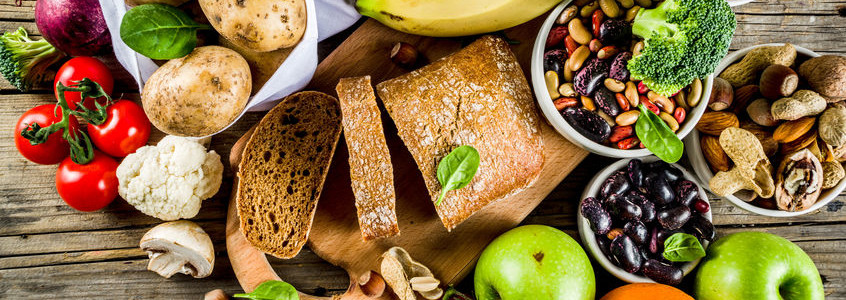
Consumers across the spectrum—millennials, people with digestive conditions, those following a low-calorie diet, parents mindful about children’s well-being, and others—are demanding safer, healthier baked goods that provide nutrients, health benefits and help improve the overall quality of life.
High fiber bread
High fiber bread is a variety of bread that has been formulated and processed to comply with food labeling requirements established by the FDA. This includes nutrient claims of “high in fiber,” “rich in fiber” and “good source of dietary fiber.”
These claims require that the product contains at least 20% of the daily reference value (DRV) for dietary fiber (28 g x 0.2 = 5.6 grams) per reference amount customarily consumed per eating occasion (RACC for bread: 50 grams).
Comparison of fiber content (in grams) per slice of bread (36 g):
| White | Rye bread | Whole wheat | Multigrain | High fiber |
| 0.5 g | 1.6 g | 2.0 g | 2.5 g | 6–10 g |
What is dietary fiber?
According to the FDA, dietary fiber is defined as non-digestible soluble and insoluble carbohydrates (with 3 or more monomeric units), isolated from plant sources or synthetic, that have physiological effects that are beneficial to human health. Sources of fiber include:
- Fruits
- Whole cereals and grains
- Oat bran
- Oat hulls
- Legumes and pulses
- Gums (pectin, guar gum, locust bean)
- Cellulose
- Resistant starch
What ingredients are in a high fiber bread formulation?
- Bread flour: 100%
- Water: 65–75%, based on flour weight
- Fiber: 10–30%
- Yeast, compressed: 5.0%
- Sugar: 8–12%
- Salt: 2.5%
- Fat: 1.0%
- Vital wheat gluten, VWG: 8.0–15.0%
- SSL: 0.5%
- DATEM: 1.0%
- Mono- and diglycerides: 1.0%
- Calcium propionate: 0.5%
- Ascorbic acid: 90–180 ppm, based on flour weight
How is high fiber bread produced?
Fiber bread can be made with the straight dough and sponge and dough system. If using the sponge and dough system, the total amount of fiber should be added to the sponge side for proper hydration.
The time required to mix high fiber dough is longer than that of regular dough due to the high levels of VWG. Fiber dough is less tolerant to over-mixing because of the cutting action of fiber particles. Makeup should be gentle on the dough, as it tends to be less elastic and more extensible than regular white pan bread doughs.
A closer look at the baking step
Because of the high fiber, the processing of this bread needs special attention. Thermal profiling can help with tracking the key points of the production line. Of the normal processing steps, at least three will benefit by obtaining in-transit thermal profiling data:
Final Proofing: is profiled with a combination relative humidity and temperature profile recording device. This ensures consistent dough properties are delivered to the oven year-round.
Baking: is profiled with a thermal profiler and for reliably consistent data with which to manage the S-Curve for the denser and more moist variety.
Profiling the Cooling Line: helps eliminate packaging condensation with appropriate line speed (and thermal control if not passively ambient).
High fiber bread has special features that influence how it should be baked:
- Fiber bread dough has very high water content compared to regular white pan bread and buns. In order to properly remove the excess water, longer bake times are required.
- Fiber-rich dough is heavier and denser than regular bread doughs, which impacts baking temperature and time. Thermal profiling is required to determine the optimal oven settings appropriate for high fiber bread.
Higher water content and denser dough require raising zone setpoints and bake time. To attain the targeted packaging size, setting the zone temperatures higher from the beginning while slowing the line speed (tunnel ovens) or extending bake time (rack ovens) adjusts the percentage of bake time for starch gelatinization and arrival without negatively affecting yeast kill.
The proper oven settings can be determined with the aid of thermal profiling tools. Equally important, profiling data can help determine oven adjustments for optimum crumb, texture and moisture content to maximize shelf-life of high fiber bread.

